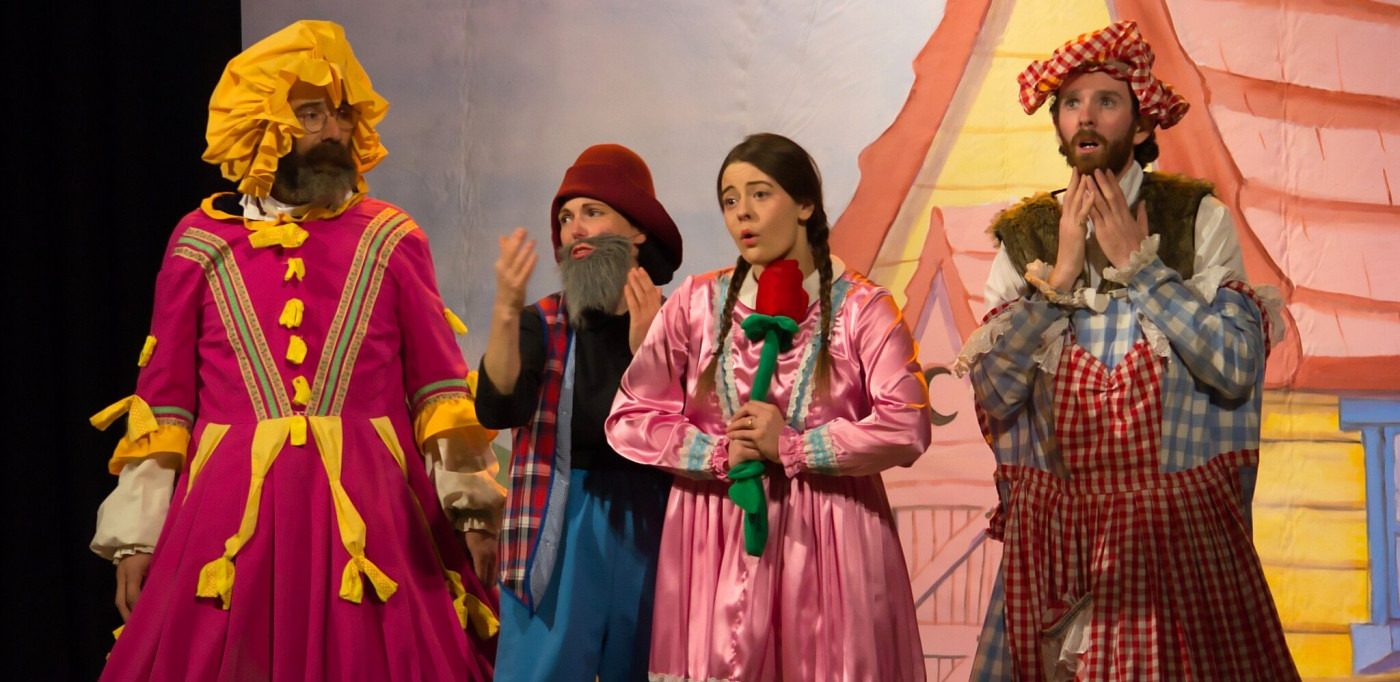Reading between the seams: What a drag? The evolution of pantomime, costume and characters
Inspired by a recent Instagram story from the University of Warwick alum Rob Madge, in which their friend had roasted their eye makeup before going onstage as the Spirit of Sherwood (in this year’s 2024 Palladium Panto Robin Hood), I was provoked to consider the fashion and flamboyance of the British Pantomime and how the fashion and trajectory has changed over the centuries.
So, when did it all begin? I was impressed to find that the tradition began in the Victorian era as a buzzing, popular art form. It was less so a Christmas tradition and more so aristocratic entertainment, with the early 18th century seeing classical stories unfolding onstage, punctuated by music and, shockingly, without dialogue. Incorporating old English folk stories like Dick Whittington, Robin Hood, and the Children of the Wood, stories which audiences would have been familiar with, drew in eager audiences. Consequently, upon discovering the increasing popularity of pantomime the productions evolved to more domestic stories and topical satire, replacing the classical folklore.
In 1843, the tradition of panto we know and love today took form, invoking witty puns, tactical wordplay, audience participation, mime, exaggeration, chases and memorable transformations and costume changes. Now the nations favourite fairy-tale characters took centre stage alongside animal sidekicks, magical creatures as well as the traditional stock characters of the principal boy and the Dame. Of course, men playing female presenting roles on stage was the norm and it wasn’t until the restoration in 1600 that women were allowed on; the Pantomime tradition played on these conventions and the panto Dame was born. It was through the Dame’s obvious masculinity that was integral to the gag for the 19th century audience. It wasn’t until the late 19th century that pantomimes became associated with Christmas as they customarily opened on Boxing Day, creating the unbreakable bond between Christmas, family fun and the pantomime.
With her outrageous oversized hoop-skirt, clown-like makeup and almost grotesque appearance, many articles have cited that the Dame and the Drag Queen are intrinsically linked.
As the productions moved with the times, they became increasingly focussed on the spectacle of set designs and special effects. Lighting enhanced the magic and technological advances, boosting the use of projection and making for streamlined scene changes. The epic scale of the show became irreplaceable. Then came the dazzling and gaudy costumes in tandem with the familiar archetypal characters and stories we all grew up with. Throw in a few adult jokes, and you have your cult-classic British Pantomime.
History lesson done, let’s consider the costume and character advancement as the tradition evolved. The Dame is flamboyance central! With her outrageous oversized hoop-skirt, clown-like makeup and almost grotesque appearance, many articles have cited that the Dame and the Drag Queen are intrinsically linked. Traditionally a middle-aged man would play the Dame which audiences (and children, still to this day) find hilarious. The Dame silhouette masked the masculine body, and her hair would be big, bright and over the top to the max; sometimes containing baskets or prop-accessories that link to her character, be it stepmother, widow or mother goose. The face is classically- clownish, with a dramatic eye and overdrawn lips, rouge cheeks, and almost no blending. Contemporary drag culture, born out of theatre, moves away from the exaggerated, clown look and more to realistic, blended and snatched looks following recent trends.
Whilst we have an industry full of women who would confidently, fully-embody the role of the Dame, the thought of straying from tradition makes people shake in their boots
The cross-dressing tradition does seem to have lessened, however. In an age where we live in a world dominated by men, whilst we have (or believed to have) progressed as a society, it is still contested that whilst we have an industry full of women who would confidently, fully-embody the role of the Dame, the thought of straying from tradition makes people shake in their boots. Audiences and traditions are (and should always be) be open to change.
In recent years, the London Palladium has been the West End home to the Pantomime, and to be casted in one is highly coveted for the West End and theatre industry. Many actors including Julian Clary, Nigel Havers, Paul Zerdin, Gary Wilmot, and Rob Madge have featured in the Palladium Pantos for consecutive years. With this year’s Robin Hood starring Jane Macdonald, Julian Clary, Rob Madge, Nigel Havers, Marisha Wallace, Charlie Stemp, and Tosh Wanogho-Maud, the production showcases diversity as well as household names and impressive talent alongside the Palladium Panto veterans.
The magic, glitter and spectacle that is British Pantomime has only shone brighter, more sparkly, and become more sought after to see, if not for the star-studded cast, then for the renowned and respected venue. As technology advances the magic of theatre, children and adults alike flock to see the latest fairy-tale fantasy awakened live.
So, will you be recreating looks? Or simply looking up, out, and onto the stage?

Comments